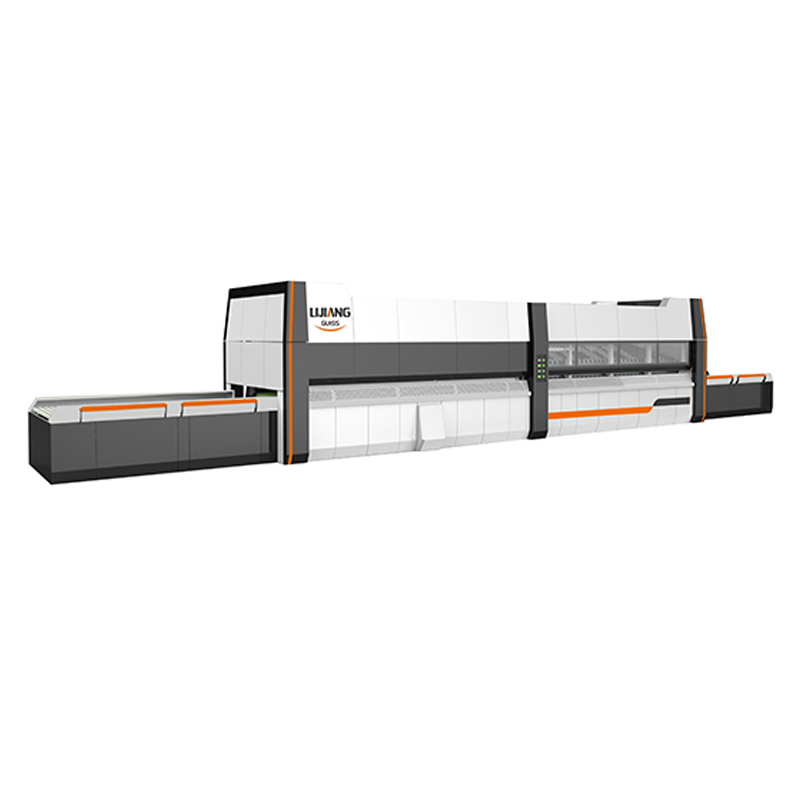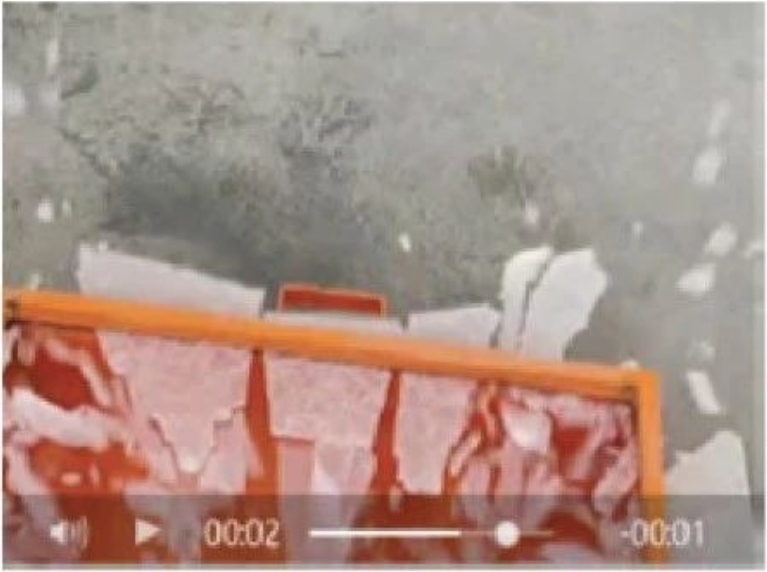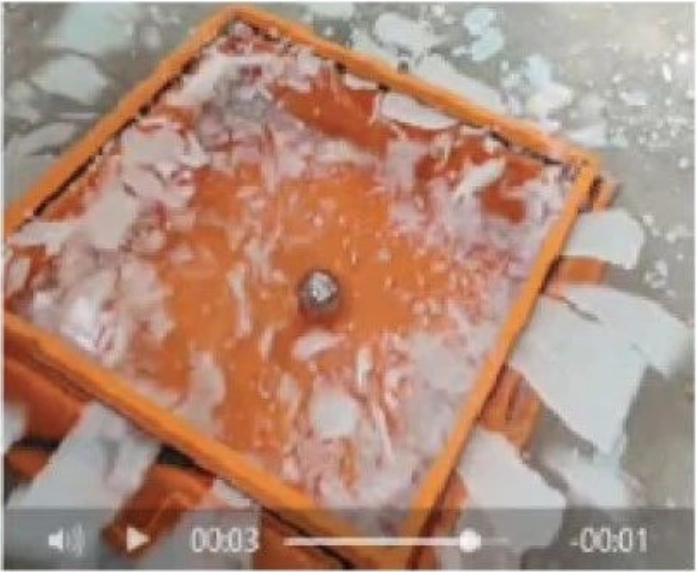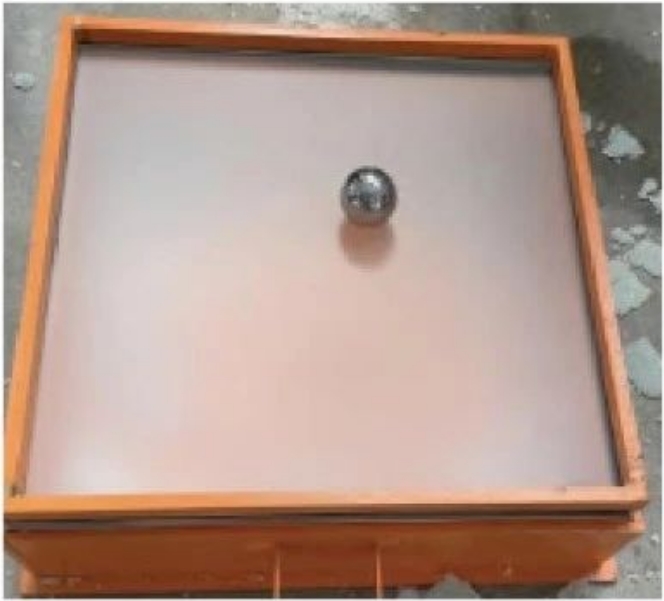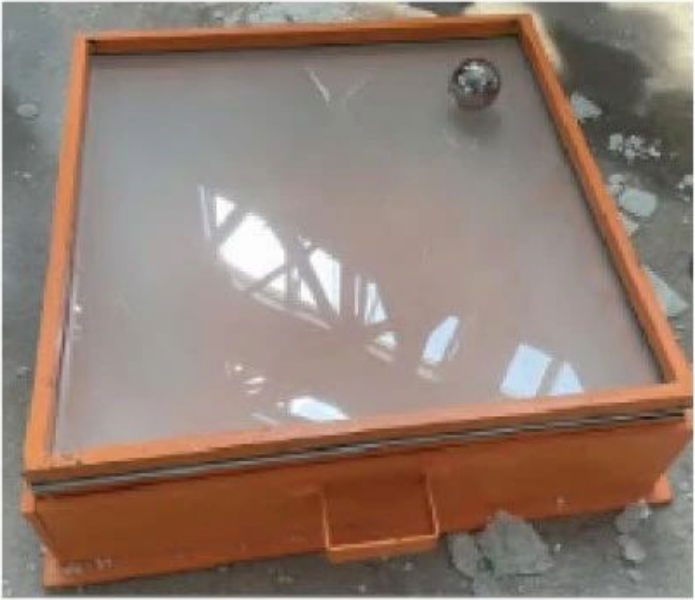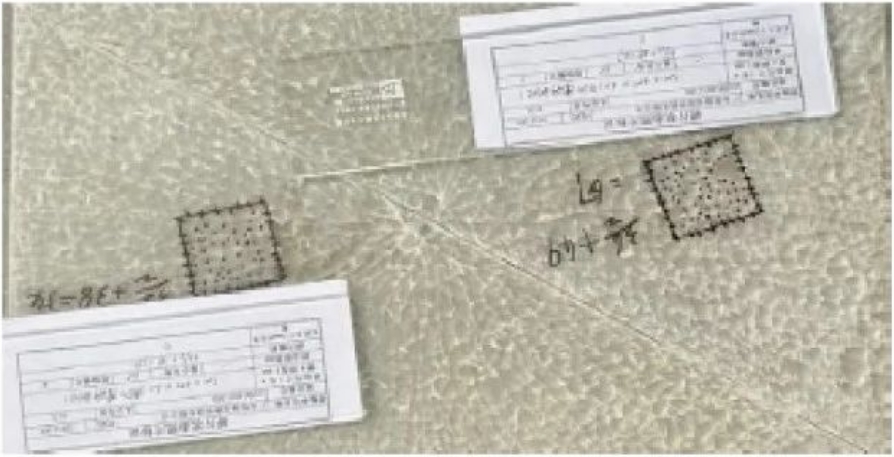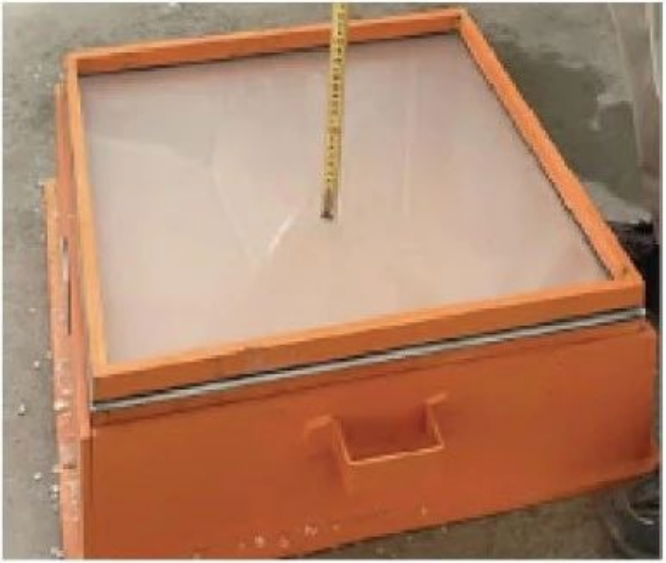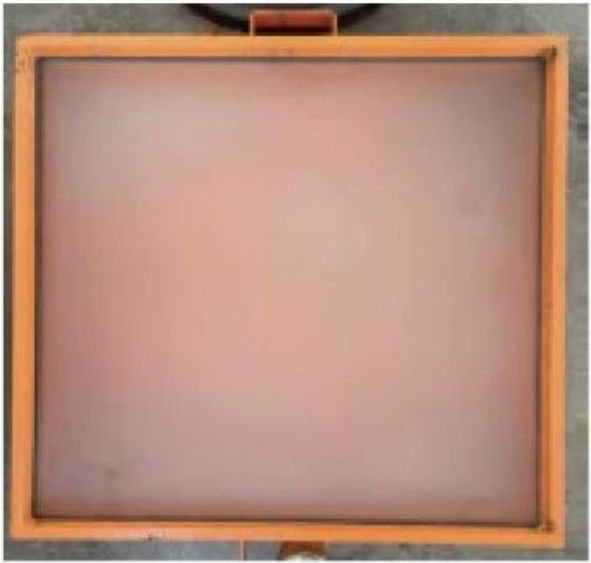Discussion on the safe and stable technology of frosted tempered glass for architectural decoration.
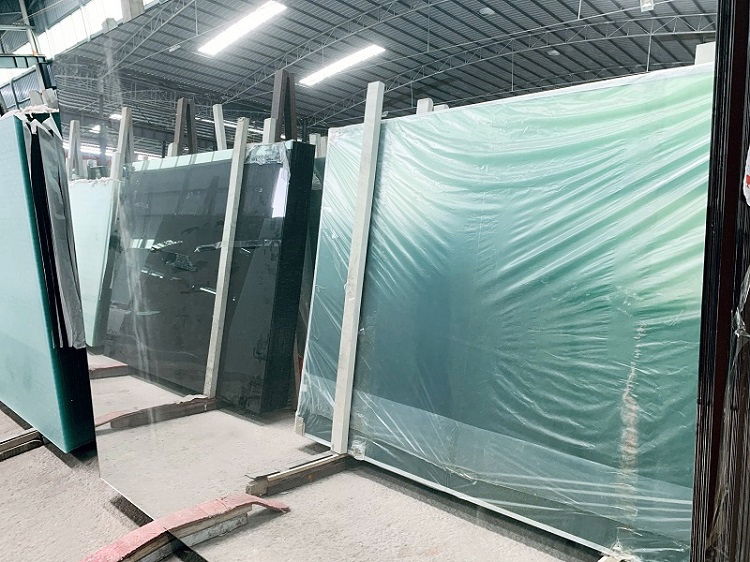
1. The preface
In the existing application fields of architectural decorative tempered glass, multiple impact tests on architectural decorative tempered glass are a key part of testing whether the safety performance of the glass is stable. Starting from December 1, 2020, some mainstream developed countries will strictly implement the international industry standard "About Architectural Decoration Tempered Glass Impact Resistance Samples" involved in initial, expansion, and supervision (including suspension and recovery) projects. "Notice on Requirements for Glass Impact Resistance Inspection Samples". For certification testing of all certified architectural and decorative tempered glass, specify and retain sample photos of impact resistance tests. When an enterprise is unable to prepare samples as required or fails the impact test, the laboratory will issue a failure report, which will be dealt with as a failure in certification supervision and inspection after evaluation by the agency.
Frosted glass is often used for windows or partition glass in bathrooms and other areas that need to be hidden. It can also be used for glass ceilings, which have the dual functions of privacy and decoration. Some manufacturers directly paste frosted films on ordinary tempered glass to serve as decorative frosted tempered glass. This is an out-of-range certification and will be punished. Moreover, such films have a short service life and will fade after two or three years. fall off. Some businesses use ordinary frosted glass for decorative effect, but the glass is easily broken and produces long sharp fragments, which can cause harm to people.
Therefore, for glass deep processing practitioners and architectural glass end users, only safe, stable, and legal decorative tempered glass is the first choice for home decoration designers, which not only expands the depth and height of space but also greatly improves the design space. And decorative grade, safe and reliable suitable for long-term use.
2. The safety glass for construction
Safety glass is a type of glass that will not break after severe vibration or impact and will not easily hurt people even if it breaks. The international industry standard "Safety Glass for Construction" includes fire-resistant glass, tempered glass, laminated glass, and homogeneous tempered glass. Safety glass has good safety, impact resistance, and penetration resistance, and has anti-theft, explosion-proof, impact-proof, and other functions. It is widely used in high-rise building doors and windows, glass curtain walls, indoor partition glass, lighting ceilings, sightseeing elevator passages, and other parts that are prone to impact and impact causing human injury. To be included in the "Product Catalog for Compulsory Product Certification", you must obtain a certification certificate issued by a certification agency designated by the National Certification and Accreditation Administration Commission, and ensure that the certification requirements are met within the validity period of the certification before you can use the certification mark. After passing the certification and applying the certification mark, it can be shipped, imported, sold, and used in business activities. The most important and safest way to check whether the architectural glass is safe and stable is to check whether there is a CCC certification mark on the safety glass. Because according to regulations, safety glass must have the CCC certification mark.
Figure 1 The tempering glass with the CCC Certification mark
2.1 Tempered glass
Tempered glass is a kind of safety glass and a kind of prestressed glass. Chemical or physical methods are usually used to increase the strength of the glass, form compressive stress on the surface of the glass, improve the load-bearing capacity, and enhance the wind pressure resistance, and cold and heat resistance of the glass itself. Impact, etc. Tempered glass has the advantages of safety, high strength, thermal stability, etc. It is 3 to 5 times the impact strength and bending strength of ordinary glass. Tempered glass is obtained by cutting ordinary glass to the required size, heating it to a point close to the softening point of the glass, and then cooling it quickly and evenly.
2.2 Architectural decoration tempered glass
The tempered glass made by the "engraved, sandblasted, frosted, glazed, embossed, frosted" process is also an architectural decoration type of tempered glass. Tempered glass is a finished product. The completed tempered glass needs to be frosted and decorated. You can choose to apply a film on the glass surface. It will have a good decorative effect in a short time, but as time goes by, bubbles and other problems will gradually appear. If you sand the tempered glass directly, the glass will easily break due to external force.
Therefore, glass deep processing practitioners must not only ensure the safety and stability of tempered glass, but also ensure the decorative stability of frosted glass, and must carefully discuss the production process of architectural decorative tempered glass.
3. Tempering glass production process
Tempered glass can no longer be cut, processed, or damaged. The glass can only be processed to the required shape before tempering, and then tempered. Otherwise, it will break due to destroying the balance of uniform compressive stress, affecting the safety and stability of building application components.
3.1 Main processes of tempering glass
At present, the main process of glass tempering by tempering glass production line is the physical tempering process of heating and quenching the glass. Quickly heat the glass piece to close to the glass softening temperature (≥600°C), and then quickly move it to the air grille, blowing high-pressure cold air on both sides of the glass to quickly and evenly cool the glass to room temperature. The glass surface is under tension internally and externally. The compressive stress state enhances the impact strength and bending strength of the glass.
The LIJIANG Glass Tempered Glass Production Line
3.2 Tempering process parameters
Tempering temperature directly affects the strength of glass and is an important parameter in the tempering process. The higher the heating temperature, the easier it is to explode and break during quenching. The tempering temperature reaches above 690°C, and if the glass is too soft, it will cause deformation or light distortion, resulting in a "mirror" phenomenon - image distortion, so the normal temperature of FRP is 640°C ~ 680°C. Under normal circumstances, various types of heating furnaces have different furnace structures, different locations of temperature measuring instruments, and different surrounding conditions. In addition, due to the customization of tempered heating furnaces according to each company's product requirements, when producing tempered glass The temperature setting of the tempering furnace is generally 50℃~130℃ higher than the tempering temperature, sometimes even higher. The parameters of the ordinary tempering production process are shown in Table 1. Under normal circumstances, the tempering process parameters of architectural decorative tempered glass are the same as those of ordinary tempered glass.
Table 1 Commonly used standard parameters for tempering
| 4mm white glass | 5mm white glass | 6mm white glass | 8mm white glass | 10mm white glass | 12mm white glass | |
|---|---|---|---|---|---|---|
| Heating temperature ℃ upper/lower | 680/640 (±1) | 685/678 (±1) | 680/670 (±1) | 687/683 (±1) | 685/681 (±1) | 673/671 (±1) |
| Heating time s | 160~180 | 200~230 | 240~250 | 320~330 | 425~450 | 480~510 |
| Tempering time s | 20 | 20 | 40 | 120 | 150 | 200 |
| Quenching time s | 3030 | 3030 | 5050 | 8080 | 100 100 | 120 120 |
| Quenching wind pressure MPa | 12000 | 8500 | 6000 | 3000 | 1600 | 1400 |
| Wind fence distance mm | 5 5 | 8 8 | 12 12 | 28 28 | 32 32 | 40 40 |
| Cooling air pressure MPa | 8000 | 8500 | 8000 | 7200 | 7000 | 6200 |
| Cooling time s | 80 | 100 | 195 | 250 | 300 | 350 |
| Furnace feeding speed cm/s | 25~35 | 25~35 | 25~35 | 25~35 | 25~35 | 25~35 |
| Furnace baking speed cm/s | 50~60 | 50~60 | 50~60 | 50 | 50 | 50 |
4. Ordinary tempered glass inspection
According to the international industry standard "Architectural Safety Glass Part 2: Tempered Glass", the tempered glass confirmation inspection items and requirements and inspection methods are shown in Table 2. The status of ordinary tempered glass fragments is shown in Figure 2, taking 6mm tempered glass as an example.
Table 2 Tempered glass confirmation inspection items, requirements, and inspection methods
| Standard Terms | Test items | Technical requirements |
|---|---|---|
| 5.5 | Impact resistance | Take 6 tempered glass samples for testing. If no more than 1 sample is damaged, it is considered qualified. If more than 3 samples are damaged, it is considered unqualified. When the number is 2, take another 6 pieces for testing. All 6 pieces must be Not destroyed as qualified |
| 5.6 | Fragmentation status | Take 4 tempered glass samples for testing. The number of fragments in each sample must exceed 40 in the 50mm*50mm area, and a small number of long fragments are allowed. Their length does not exceed 75mm, and their ends are not blade-shaped. The angle between the long fragments extending to the edge of the glass and the edge is no greater than 45° |
| 5.7 | Shot bag impact performance | Take 4 tempered glass samples for testing, which must meet the requirements of any of the following (1) or (2).When the glass breaks, the sum of the masses of the maximum 10 fragments of each sample shall not exceed a mass equivalent to the area of 65 square centimeters of the sample.The sample will not be damaged when the shot bag drops from a height of 1200mm. |
Figure 2 6nlm ordinary tempered instantaneous fragmentation state
4.1 Frosted tempered glass inspection
According to the provisions of Article 6.5 of "Safety Glass for Construction Part 2: Tempered Glass", the impact-resistant sample of decorative tempered glass for construction used during certification inspection should be of the same thickness and type as the product, and should be produced in the same process as the product manufactured under the conditions.
Starting from December 1, 2020, all mandatory product impact resistance testing samples must in principle use samples that are consistent with the actual product process conditions and have 100% coverage of the decorative area. For the impact resistance samples of architectural decorative tempered glass involved in initial, expansion and supervision (including suspension and recovery) projects, the requirements of the industry standard "Notice on Requirements for Impact Resistance Inspection Samples of Architectural Decorative Tempered Glass" shall be strictly implemented.
4.1.1 Discussion on the detection of common frosted tempered glass
The tempering process parameters of architectural decorative tempered glass are the same as those of ordinary tempered glass. A set of ordinary frosted tempered glass samples are processed according to the ordinary tempering process. Take a total of six samples of 610mm*610mm for impact resistance testing, with the sand surface facing up 3 All the blocks were broken, 1 piece with the smooth side facing up was broken, and 2 pieces were safe, as shown in the screenshots of the field test video, Figure 3 and Figure 4.
Figure 3 Test of frosted tempered glass with sand side upward
Figure 4 Test of frosted tempered glass with glossy side up
The above test is judged to be unqualified. Conclusion: The safety performance of architectural decoration tempered glass obtained from ordinary frosted glass according to the ordinary tempering process is unstable.
4.1.2 Discussion on the detection of common frosted fireproof tempered glass
The common flat glass in the construction market is soda-lime-silica glass, whose softening temperature is below 700°C. Single-layer glass under such conditions does not have fire resistance. When soda-lime-silica glass is heated at a temperature above 1200°C and then rapidly cooled, it can meet the fire-resistant integrity requirements within a certain period. This is high-stress monolithic fire-resistant glass for buildings. The frosted tempered glass produced according to the ordinary high-stress single-piece fire-resistant glass process was also sampled for impact resistance testing. As a result, 3 pieces with the sand surface facing upward were all broken, and only 2 pieces with the smooth side facing upward were safe. As a result of more than 20 years of technical experience in the field of fire protection, a strong convection horizontal fireproof tempering furnace was customized. According to the tempering production operation, a group of 6mm and 8mm glass were tempered and then sampled for impact resistance testing.
Product test 1: 6mm common glass fireproof frosted tempered glass
The original piece of flat glass is physically frosted and then subjected to fireproof tempering production process parameters to produce Depu Glass fireproof frosted tempered glass. Take a set of 6 samples of 610mm*610mm and conduct an impact resistance test. The first piece of glass with the smooth side facing up is broken, the remaining 2 pieces are all safe, and the 3 pieces with the sandy side facing up are all safe. The details are shown in the screenshots of the field test video in Figure 5 and shown in Figure 6.
Figure 5 Test of frosted tempered glass with sand side upward
Figure 6 Test of frosted weakened glass with glossy side upward
The above test is based on international industry standards to determine that the test product has passed the test and is judged to be qualified. To increase the passing rate of the test results, three more groups were selected for the test. The test results of each group were that the first piece of glass with the sand side facing up was broken, the remaining 2 pieces were all safe, and the 3 pieces with the smooth side facing up were all safe. The result is The pass rate is 100%.
The 6mm common fireproof frosted tempered glass produced in this furnace was then tested for fragments. As shown in Figure 7, the fragment status complied with the requirements of international industry standards and was judged to be qualified.
Figure 7 The status of 6mm common fireproof frosted tempered glass fragments
Product test 2: 8mm common glass fireproof frosted tempered glass
Take the original piece of 8mm flat glass and conduct a fireproof frosted tempered glass package inspection and analysis according to the above process production parameters. Take a group of 6 samples of 610mm*610mm and conduct the B-resistance test. The first piece of glass with the sandy side facing up is broken, the remaining 2 pieces are all safe, and the 3 pieces with the smooth side facing up are all safe. The details are shown in the field test pictures in Figure 8 and As shown in Figure 9.
Figure 8 The test chart of frosted tempered glass with the sand side facing up
Figure 9 The test chart of frosted tempered glass with the light side facing up
Figure 8 is a test chart of frosted tempered glass with the sand side facing up. Figure 9 is a test chart of frosted tempered glass with the light side facing up. The above tests are based on international industry standards. The test product passed the test and was judged to be qualified. To increase the passing rate of the test results, three more groups were selected for the test. The test results of each group were that the first piece of glass with the sand side facing up was broken, the remaining 2 pieces were all safe, and the 3 pieces with the smooth side facing up were all safe. The result is The pass rate is 100%. The 8mm common fireproof frosted tempered glass produced in this furnace was then tested for fragments. As shown in Figure 10, the state of the glass fragments met the national standards and was judged to be qualified. Through the on-site impact test of multi-component products of 6mm and 8mm common fireproof frosted tempered glass products, both of them meet the specified requirements. It can be judged that the common fireproof frosted tempered glass produced by this process has strong safety and stability and is suitable for building safety glass requirements.
Figure 10 The status of 8mm common fireproof frosted tempered glass fragments
5. Success Analysis of Pubo Fireproof Frosted Tempered Glass
The main component of soda-lime-silica glass is about 71% of the microscopic tetrahedral skeleton formed by silicon oxide, and the rest is about 14% of stable oxides (alumina, calcium oxide, magnesium oxide) that adjust the properties and about 15% of flux ( Sodium oxide, potassium oxide, sulfur trioxide), after frosting treatment, then fireproof tempering process, after ultra-high temperature softening, the soda-lime-silica frosted glass is physically softened, reorganized and fused, and rapidly cooled to form high-strength frosted glass. Safety and stability have reached an ideal state. Customized forced convection fireproof horizontal tempering equipment is a special equipment used to produce flat fireproof tempered glass. The original glass meets the requirements of international industry standards. The glass stress is uniform, the particle state is uniform, the conventional bow deformation is 2‰, and the furnace body has a long-term The working temperature can reach 800℃, and the wind pressure can reach 18000pa.
First set the parameters according to the thickness of the glass, manually place the piece (whole piece or multiple pieces), and automatically enter the electric heating furnace. The glass reciprocates in the furnace and is heated at the same time. After completing the heating, it is discharged to the air grid roller table. On the air grid roller table Reciprocating motion while blowing air for quenching. When producing glass with a thickness of 6mm or more, the low-pressure fan is started, the balance valve adjusts the upper and lower air pressure, and the tempered and cooled glass is transported to the discharge roller table.
The temperature change in the furnace is small, and the production temperature of 700°C is achievable by other tempering machine production equipment. However, what is difficult to achieve is that there are 5 sets of convection fans with variable frequency control, which can adjust the wind pressure according to the heating principle of the glass; and there are 7 sets of convection fans. Set of convection air grids, the upper furnace convection heating system uses heating units arranged in a matrix, which reciprocates on the air grid roller table while blowing air for quenching. Therefore, the tempered glass produced by this equipment and process is significantly more stable than ordinary ones. Table 3 shows the comprehensive fireproof tempering parameters.
Table 3 Comprehensive fireproof tempering parameters
| Thickness | Heating time | Cooling time | Main furnace heating average temperature | High and low pressure balance | Tempered fan | Cooling fan |
|---|---|---|---|---|---|---|
| 5mm | 180s | 140s | 710℃ | 60 | 8500pa | 7500pa |
| 6mm | 255s | 170s | 720℃ | 109 | 8000pa | 5000pa |
| 8mm | 350s | 160s | 730℃ | 120 | 8300pa | 5000pa |
| 10mm | 460s | 360s | 720℃ | 70 | 5500pa | 4500pa |
| 12mm | 560s | 400s | 715℃ | 100 | 3500pa | 3500pa |
6. Conclusion
This article discusses the safe and stable production process of frosted tempered glass for architectural decoration. It uses many years of production experience in high-stress single-piece fireproof glass to achieve a uniform particle state of tempered glass, uniform glass stress, and high impact strength and The bending strength reaches a better state. Compared with the common tempering production process on the market, the finished product has also been subjected to impact tests, showing that the safety performance of the glass is more stable. Modern design pursues elements such as simplicity, transparency, and respect for nature. Frosted tempered glass for architectural decoration is legal and safe, and can naturally express the designer's inspiration.
For more information about insulating glass processing equipment and insulating glass processing accessories, please click here to learn more.

